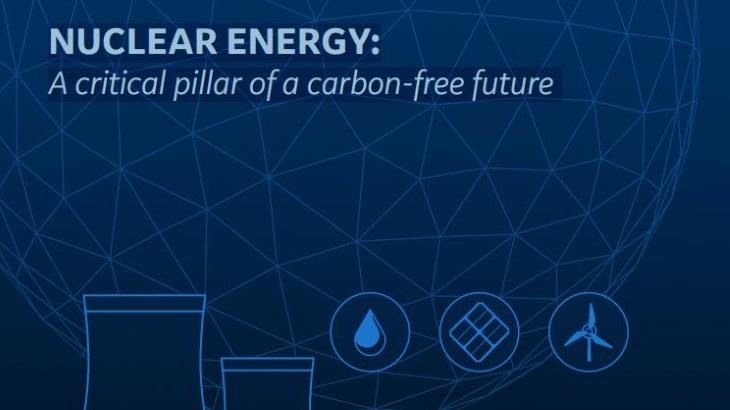GE’s steam turbine technology operates in 50% of the world’s nuclear power plants, producing 200 gigawatts (GW) for the global grid. With a global fleet of 53 GW, 99.96% reliability, and capable of generating 2% more power output than a previous turbine configuration, GE's says its Arabelle steam turbine is compatible with all large-size reactors. It is also developing a small modular reactor (SMR), the BWRX 300.
"Decarbonising the energy sector and attaining net-zero greenhouse gases to combat the threat of a warming planet must become a more urgent worldwide priority, with a focus on significant investments, national commitments and consistent policy and regulatory frameworks. It will require cooperation across national boundaries, sectors of the economy and the political spectrum," GE said.
With some 450 nuclear reactors in the world, one of the most effective and economical solutions will be to extend operating licences to support the shift to a zero-carbon economy, the paper says. GE estimates increasing the thermal power rating and retrofitting a typical steam turbine and generator can achieve up to 20% or more additional gross power output.
In terms of innovation, SMRs have the potential to drive down investment cost per megawatt, it says, and their deployment can be accelerated with government support. GE forecasts about 10 GW per year of demand for new nuclear plants in the coming decade, which it says is in line with the International Energy Agency's Net Zero Emissions by 2050 Scenario. Beyond 2030, nuclear deployment is only expected to accelerate in an increasingly carbon-constrained world, it notes.
GE recommends the following steps for the power generation industry:
- Invest urgently in a combination of nuclear, renewables, energy storage, combined cycle gas turbines with carbon capture, and hydrogen;
- Advocate for policies aligned with the Paris Agreement and its goals to reduce CO2 emissions while ensuring safe, affordable, and reliable sources of electricity;
- Increase funding in research, development, and deployment to innovate and adopt cleaner energy technologies;
- Promote international cooperation and free flow of goods and services aligned with the World Trade Organization; and,
- Encourage cross-sector cooperation to reduce CO2 emissions, including providing hydrogen produced from emissions-free energy.
A typical 1000 MW nuclear unit reliably delivers 8 terawatt-hours (TWh) per year, the paper notes, which means 8 trillion watt-hours of on-demand power generation with affordable and stable cost of electricity. That is enough power for 1.3 million people per year in Europe, and equivalent to the power generation of 750 4 MW windmills, it adds.
Nuclear can also be part of a hybrid energy system, which could use electricity and/or heat produced by the reactors to produce a clean source of hydrogen, the paper says, adding the US Department of Energy's conclusion that a 1000 MW nuclear reactor could produce more than 200,000 tonnes of hydrogen each year.
The paper, Nuclear Energy: A critical pillar of a carbon-free future, is here.





_30199.jpg)
_72306.jpg)

_49562.jpg)





